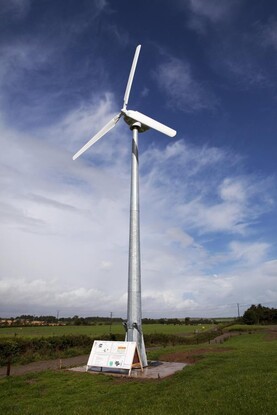Ireland has a 32-county electricity system, courtesy of the interconnected all-island transmission grid and a single wholesale power market.
Electricity is unusual. Demand must be met with (more or less) instantaneous supply, since electricity cannot easily be stored. If you fancy an ice cream, somebody in the supply chain has kept stock in the freezer that was produced days, weeks or months ago and there is no need for an ice-cream plant to click into action to coincide with your whim.
If you decide to switch on the dishwasher, somebody had better be generating electricity. Balancing supply with demand, instantaneously, is a challenge for power engineers.
There are ways to do some storage: batteries are fine for torches but not possible at industrial scale. So neighbouring systems where demand fluctuations are not perfectly correlated can join, sharing capacity and saving cost, through interconnection.
They can economise too on the margin of spare capacity needed to deal with outages in generating plants.
There are two links to the UK grid, the Moyle interconnector between Northern Ireland and Scotland and the EWIC interconnector routed between Dublin and north Wales.
Sometimes these interconnectors export power, but mostly they import. There were several days during May when both interconnectors were below the zero line (exporting power), exporting on a few occasions at maximum capacity, but mostly they were importing.
For a lot of days, they were importing at maximum. If they were both operating regularly around the zero line, there would have been no point building them in the first place.
Interconnectors save money by sharing capacity across markets whose supply/demand balances fluctuate independently. If the systems on the islands of Ireland and Britain were in perfect balance, internally and day-by-day, the folks who built the idle interconnectors would have been fired.
Ireland is running short of generation capacity and there are plans for a third interconnector, this time to France.
Cars
There will be greater demand for electricity as petrol and diesel cars are retired and as oil-fired heating systems get replaced with electric technologies, on the presumption that power generation will come increasingly from plants that do not pump out carbon emissions.
It will never be possible to generate enough instantaneous power from zero-carbon sources such as wind and solar.
Onshore wind delivers power about 30% of the time and unpredictably. Offshore locations are expected to do better but there is little experience yet of solar farms in these latitudes.
There will need to be backup for these technologies and there are four possible sources. These are batteries, conventional gas power stations, nuclear stations and interconnection.
Batteries on the scale required will be seriously expensive and there are no plans for widespread deployment. Gas stations have significant carbon emissions, although substantially lower than coal, oil, or peat.
Nuclear stations have zero operating emissions but historically had high capital costs and came in units quite large relative to the small Irish market.
New technologies are moving beyond the experimental stage and smaller nuclear units at more affordable costs will become available.
Planning consent for the interconnector to France has recently been sought by Eirgrid but it will not be commissioned before the end of the decade, allowing for the inevitable odyssey through the courts.
The forecast increase in electricity demand cannot realistically be catered for on current plans without risk to supply security.
There is just one gas import link from Scotland and production at Ireland’s only field, Corrib off Mayo, will fall away over the next few years.
The Government has banned exploration, which means that some promising blocks close to the Corrib offshore infrastructure cannot be investigated.
There has also been an announcement that no importation terminal for liquefied natural gas (LNG) can be built.
The Sunday Business Post has just reported a sharp increase in blackout alerts and the ESB has resorted to running the coal-fired Moneypoint plant at high volume. This should really be phasing down by now.
The Government accepts that new gas plants will be needed, as occasional backup for interruptible wind. But the gas supply chain is insecure and rendered more so by banning both exploration and an LNG terminal.
With nuclear also ruled out, this is a wing-and-a-prayer policy.






 This is a subscriber-only article
This is a subscriber-only article











SHARING OPTIONS: